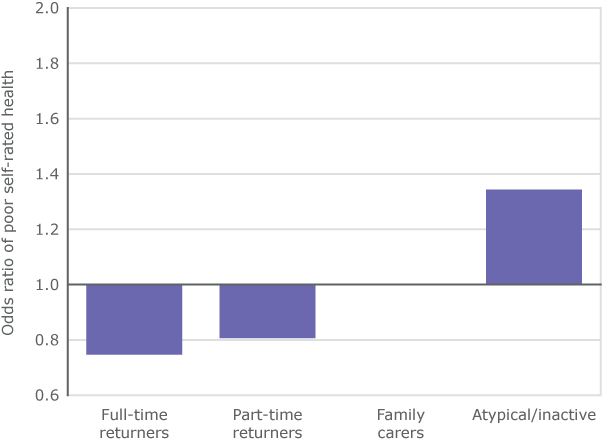Maximising health in later life is one of the most important policy issues for the welfare regimes of ageing societies. At the same time, health outcomes in later life can only be fully understood when also taking into account past experiences. For example, a woman who worked during most of her life might find herself with more economic and social resources later in life than a woman who mostly devoted her time to family responsibilities, and such accumulation of resources can positively influence her general health.
So which life course designs foster healthier later lives for women? Are they career or family oriented or both? Juliet Stone, Maria Evandrou, Jane Falkingham, and Athina Vlachantoni found that English women who had worked full or part time both before and after caring for their families have better health outcomes in later life.
Sequence of roles is key
The findings of this study suggest that the combination of employment and family life responsibilities across different periods of the life course can positively influence health in later life: Older women who had spent a period of time caring for their families but then returned to employment reported better levels of general health than older women who spent the majority of their working lives either working on a full-time basis or looking after their families (Figure 1). The key seems to be in the temporal sequence of the multiple roles that women may experience during their lives. That is, older women who experienced sequential episodes of employment and care are healthier than those who worked and cared for their families simultaneously.
However, women who undertook multiple roles sequentially, rather than occupying one predominant role, have the most favourable health outcomes in later life. Stone et al. therefore suggest creating policies to support a successful combination of work and family roles during women’s lives to improve their future health outcomes.

Figure 1. Odds ratio for English women to self-report poor health in later life (interviewees aged 64+ at time of survey). Notes: The reference category is full-time workers. The model controls for age at interview, multiple role index, and life-course health status.
This Population Digest has been published with financial support from the Progress Programme of the European Union in the framework of the project “Supporting a Partnership for Enhancing Europe’s Capacity to Tackle Demographic and Societal Change”.